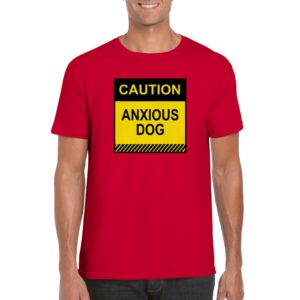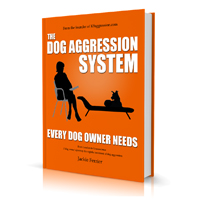Your cart is currently empty!
Do aggressive dogs have more trouble understanding humans?

Dogs are better than monkeys when it comes to reading our social cues to find hidden food and according to this study, Human-like Social Skills in Dogs?, are “unusually skilled as reading human social and communicative behavior”.
Yet in a study with selectively bred foxes who were not selected for this skill, but bred to not be fearful of humans, the fox kits are apparently just as good as dog puppies, even those who had limited exposure to humans. This paper entitled Social Cognitive Evolution in Captive Foxes Is a Correlated By-Product of Experimental Domestication suggests that the social-cognitive abilities could be part of the same system including tameness. People may have not select dogs for their special abilities in communicating with us, but these abilities may be a byproduct of our selecting dogs that were not fearful or aggressive.
Are aggressive or fearful dogs have difficulties with social-cognitive skills?
It naturally leads to the question; do aggressive or fearful dogs today have more deficits in social-cognitive skills? One would think that aggressive dogs are more preoccupied with coping in a social setting than dogs who do not tend to be aggressive, and therefor have less “mental space” to figure us out. But in people, there is a correlation between aggression and a deficit in social cognitive abilities.(1)
It is generally considered that owner-directed aggression is partly due to the anxiety of not knowing what is expected of them, confusion around the relationship or the interactions and not being able to predict what comes next. In view of social-cognitive impairment – this makes sense. Not being able to read humans (or other dogs for that matter) would naturally increase anxiety.
Some Dogs are Aggressive or Anxious in Social Conexts
Many things that people do could be misinterpreted if dogs were to look at us as if humans were not human, but dogs. For example, many aggressive episodes seem to occur when we are reaching for a dog, petting them on the back or neck, stepping over them, pushing them off furniture, etc. Most normal dogs come to learn that these actions are not threatening because they read other signs to place these human actions into context. They get that smiling, although weird, is not bearing our teeth, and than lovingly looking into the dogs eyes, does not actually mean we are challenging them. At least, most of them do.
But, while some dogs will tolerate just about anything from another dog, many of those same normal, perfectly healthy dogs will not so easily accept those behaviors from another dog. A fight might not break out, but you might hear a growl, see a raised lip, or some other ritualized behavior letting the other dog know its not okay. In fact most of the offending dogs know what they are doing when they are doing it, and are testing the waters.
Predictable Guidelines Might Help
Interestingly, one of the most common protocols prescribed for aggressive dogs are those which provide a consistent and predictable set of guidelines in which to interact, similar to the “NILIF” (“Nothing in Life is Free”) program as it was originally developed by Dr. Victoria Voith or William ‘s “Learn to Earn”. These programs are more about compliance and control rather than providing a consistent and predictable structure that clearly aims at reducing anxiety such as Dr. Karen Overall’s deferment protocols which may be more effective for behavior problems, however they still involving learned and rule based interactions.
In other words, while many people seem to view these treatment suggestions (and they are usually only one part of a full treatment program) as a means to control, they may really may be a tool to help those dogs who are socially challenged at the brain level. These programs not only help dogs to understand what they need to do, but it also provides them with a comprehensible communication channel, thereby reducing anxiety on a social level.
For those people struggling to understand why knowing or being told what to do would reduce anxiety, think about what its like to start a new job where the role of the job is not clear. You know you are supposed to do something, but your not quite sure what they are expecting, or exactly how to do it, but you know that your ability to keep the job depends on your being able to do a good job. Add to this, (just to make it fun) a volatile boss who thinks most of the world is full of idiots. It would help to have someone point you to your desk, tell you what you need to do, who to call, show you an example of something you are supposed to produce, do or say, etc.
Does Fear Have Value For Survival?
But do fearful responses actually meant an “social cognition impairment”, or a merely a different way to survive? Dogs more likely to be tame, or less likely to be fearful or aggressive, may be also be more likely to take risks. What if the human intension was hunt dogs instead of co-existing with them? How much easier would it be to lure a dog in if they were less fearful of us, and less likely to turn on us. A more reactive dog that more likely to trust what he knows is more likely to stay safe in other circumstances.
But the current reality is, dogs defined as aggressive, or those who are unable to live with their owners without problems, are now less likely to survive. There is strong pressure a get rid of aggressive dogs, from our neighbours and families, and from our society in general as evidenced by breed bans across the world, despite evidence to the contrary. It doesn’t stop with pitbulls. All sorts of breeds are being banned all over the world despite evidence that breeds are not necessarily a factor in aggression. (One example ere and see AVSAB’s Breed Specific Legislation Position Statement here).
Amercian veterinary position statements on breed here
And while fearful or aggressive behavior certainly has has value in some circumstances, it entirely depends on the context. Social cognition is essential for survival. To quote from a paper of social cognition by Uta Frith and Sarah-Jayne Blakemore,
” For most animals, survival depends on their ability to identify the movements, eye gaze and social signals of other creatures, to distinguish whether they are prey, predators or mates and to predict their future actions.” (Nature Reviews Neuroscience 2, 561-567 (August 2001)
We need our dogs to understand us, and understand the context of the situation we are in. If they are responding to our affection by snapping at us, it makes it hard to bond with them. If they respond aggressively to our friends and neighbours, it makes everyone’e lives difficult. We need to do something to improve the situation, if we can.
Does Being in Charge Help?
Traditionally, we have been taught to view dogs in the context of alpha or dominance theories. These theories have come out of observing a variety of species. The term “pecking order” has come from studying chickens hierarchies, in fact. Its simple, we can teach it to others and it can provide a frame work in which to operate and treat our dogs. At the same time we become more consistent with our dogs. But the theories that have been developed may not necessarily provide an accurate view of the whole picture.
But the more we learn, the more we start to understand “dominating” an aggressive dog is risky. Confront the dog, the dog confronts back. Maybe not at first, but often it seems as if the dog finally has enough. There can be a lot of finger pointing when things go wrong, the owner, the dog, the vet, the trainer, all who for the most part are really doing their best. But as we start to study the brain and body; how we work, how dogs work, we find the need to rethink some of our current assumptions.
Does Science Have the Answers?
Science is not all knowing. Some people have developed a mistrust of science because of the natural tendency to want to believe science so whole heartedly and yet we know that scientists don’t know everything. We want to believe: we want the easy and clear answers. But science only touches on fraction of what there is to know. Studies need funding so there are limitations. And being human we don’t always come to the right conclusion.
However despite it’s limitations science is grounded in procedure and protocols which are designed to remove bias and opinion as much as possible, and to look beyond indivdual cases. Academic studies need to be peer reviewed to get published respected journals.
Science has also opened many windows. Collectively, we know much more than we used to and its often enough to challenge our preconceptions if we can let it. At a minimum, the more we learn, the more we can be encouraged to approach research and treatment at a holistic level to help our dogs.
References
(1) Voeller, K.K.S. G.R. Lyon, editor). Frames of reference for the assessment of learning disabilities: New views on measurement issues. 1994, Paul H. Brookes Publishing Company. pp. 523–54.
ADVERTISEMENT
The Dog Aggression System Every Dog Owner Needs E-book

Anxious Dog Shirts only available in our shop

Keep people away with our Stand back shirts

